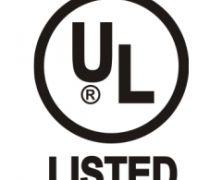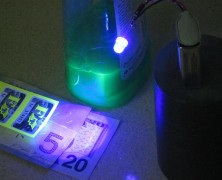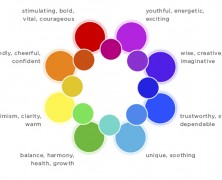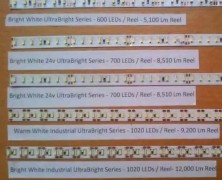While consumers are learning more about LED lighting, there are still many questions to be answered. Many LED products lack minimum safety, environmental and performance standards, leaving consumers unsure about product reliability. Thankfully, there are a number of recognized LED lighting certifications that consumers can rely upon. Let’s take a look at some of these certifications, and what they actually mean for consumers. UL Listed UL (Underwriters Laboratories) is an American safety and consulting company offering services in 104 countries worldwide. Established in 1894, UL first gained recognition by drafting safety standards and conducting safety analysis for electrical devices and components as the rise of residential electricity transmission made electronics ubiquitous in American households. As an LED lighting certification, UL Listed means that UL has tested representative samples of the product and determined it meets UL’s requirements based on its published Standards for Safety. The safety certification may also include additional information, meaning the product is UL Listed for Canada and the U.S. The UL logo used alone on packaging means the product and all its components have successfully passed UL examination as a working unit. LED lights that are UL Listed are safe for use in your home or business. Here is the UL Listed Website if you’d like to read more. CE Marking The CE mark is mandated for certain products sold within the European Economic Area, enabling freedom of movement in the European market. This marking means that the manufactured product meets EU safety, health and environmental standards that have been stipulated by legislation. Products demarcated with CE are not necessarily produced in Europe, but the marking means they can legally be sold there. All LED lights sold in Europe must carry the CE mark, which is often awarded by authorized third party organizations....
LED Strip Lights For Commercial Refrigeration And Food Display...
posted by Taran Volckhausen
As with many other businesses, the key to running a successful grocery store is to sell high quality, attractive products while maintaining low operating costs. Installing LED strip lights for commercial refrigeration and food display helps increase profit margins by increasing product appeal while also lowering operating costs. Visual merchandising is known to have a strong effect on customer buying behavior, as shown in a study published by the International Journal of Engineering Science and Innovative Technology. The study found that 85% of customers sampled felt that attractive colors and lighting make them more likely to spend more time in a store. According to the researchers, respondents mentioned that effective lighting in particular helped them to “select the right products, reduce the time wasted and to feel relaxed” during their shopping experience. If you want customers to buy food, you must make the food look appealing. Many conventional forms of artificial light fail to accurately reveal colors as they would appear under natural sunlight — but LED lighting is not a conventional source of light. LED lighting: color as it was meant to be Advances in LED technology have vastly increased the level at which LED lights can faithfully reproduce colors. Think about the decision that goes into buying a fresh mango. If the lighting source renders the colors of the fruit drab and lifeless, it’s going to be a tough sell to get customers to fork over the cash for this pricey delicacy. However, imagine those mangos under bright, natural looking, evenly distributed LED strip lights, which reproduce the fiery reds and energetic oranges in the precise manner they would be rendered by tropical daylight. LEDs also make great accent lights to spotlight high-margin fresh food displays. Adding LED lighting to fresh produce displays...
What Are The Uses For UV LED Light?...
posted by Taran Volckhausen
Until relatively recently there was no such thing as a commercially available ultraviolet (UV) LED light. But as LED technology continues to develop and power densities increase, UV LED lights are expanding into the market and replacing more traditional alternatives. Ultraviolet (UV) light is an invisible form of electromagnetic energy (light energy) that travels at a higher frequency and carries more energy than visible light. UV lightwaves were originally called “chemical rays” when first discovered in the 19th century because of their ability to cause certain substances to change at the molecular level. Here are a few examples of the many applications for UV LED lighting: Industrial and Cosmetic Curing UV curing is a process that uses UV light to instantly cure (or “dry”) inks, coating and adhesives through cross-polymerization of photosensitive materials. UV LED technology is emerging as an ozone gas- and mercury-free option for chemical curing with both industrial and cosmetic applications. Nail polish cures have traditionally been done using unregulated UV lamps, but controversy arose earlier this year over a study published in the Journal of the American Academy of Dermatology which reported a potential danger of skin cancer. The study found that LED lamps were much safer for this application, due to the lower frequency of UV light they emit. Analytic Tools Due to UV lighting’s ability to make certain materials visible to the human eye, it has been used for quite some time as an analytic tool. One common use for ultraviolet light sources is checking UV watermarks to validate currency, or identifying bodily fluids in forensic crime scenes. Scientific and Biological A 2012 study published in Applied Entomology and Zoology showed that UV LED lights were an effective method for dealing with the West Indian sweet potato weevil. This disagreeable insect...
LEDs and the Psychology of Light and Color...
posted by Taran Volckhausen
“LIGHT reveals the glories of the external world and yet is the most glorious of them all. It gives beauty, reveals beauty and is itself most beautiful. It is the analyzer, the truth-teller and the exposer of shams, for it shows things as they are.” Edwin D. Babbitt, Principles of Light and Color While interior design plans give plenty of attention to wall paint and floor colors, lighting plays a critical role that is too often overlooked. Color and lighting influence our psychological functioning and well-being on a day-to-day basis, and understanding these influences is important when creating “human-centric” spaces. Designers have been using advanced color knowledge in this way for years, and the customizability of LED lighting now allows them to do the same with light. Let’s take a closer look at LEDs and the psychology of light and color. Humanity’s fascination with color has been with us since the dawn of civilization, with different colors used to symbolize and express various moods in ancient artwork spanning from Greece to Tibet. Color theory can be somewhat subjective, as certain colors elicit varying reactions in individuals based on personal preference and cultural backgrounds. It’s a truly interesting scientific field, and a great deal of thought has gone into exploring the psychological effects of color. One way of comparing colors in the visible spectrum is to divide them into “warm” and “cool” categories. The warm colors include red, orange, and yellow—think of the sun setting on the beach, or maple leaves strewn across the yard in early fall. These colors generally convey passion, positive energy, enthusiasm and happiness. In contrast, the cool colors include green, blue and purple—think of a solitary walk on a full moon night, or the depth of the ocean sea beneath a sleeping fisherman’s boat. Those colors convey...
Understanding The Different Numbers Used In LED Strip Lights...
posted by Flexfire LEDs
When shopping for LED strip lights, you’ll regularly come across numbered terms such as 3020, 3528, and 5050. So what do these numbers mean, and why are they important in your buying process? This simple explanation will help you in understanding the different numbers used in LED strip lights. First, a basic understanding of how the strips themselves are constructed. The LED chips are mounted onto a thin, flexible metal strip that acts as a heat sink, drawing heat from the light chips and allowing them to remain cool during operation. This construction accounts for the “SMD” you’ll often see in strip light specifications, which stands for Surface Mount Device. The four-digit designation refers to the dimensions of the chip itself, in millimeters. A 3528 chip, for example, measures 3.5mm by 2.8mm, while a 5050 chip is 5.0mm by 5.0mm square. These different sizes dictate how many chips can be placed on a strip, which in turn determines its particular light qualities. Each has its benefits, so let’s break them down one at a time. The 5050 chips that Flexfire LEDs uses are actually composed of 3 light diodes, a construction sometimes referred to as a tri-chip. With 3 diodes, a 5050 chip will be brighter than other chips with one individual diode. But while a tri-chip is theoretically three times brighter, their larger size means fewer of them will fit onto a strip’s PCB (Printed Circuit Board). It also means they will generate more heat, requiring a thicker PCB to act as a heat sink. Finally, a tri-chip can be constructed with different types of diodes in the same chip, generating unique visual results. The three diodes can be combined to create millions of different color combinations, making them an excellent choice for...










